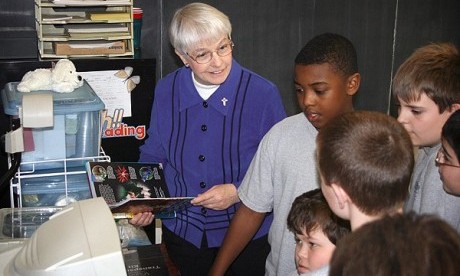Both the investigation into the orthodoxy of the US’s Leadership Conference of Women Religious (LCWR) and the “visitation” of active congregations of US sisters were initiated within weeks of each other in 2009. But while the latter received extensive publicity both in America and internationally throughout the entire time the process was underway, the LCWR investigation was practically ignored and seemingly forgotten. Although carried out entirely in secret, its outcome was made public on Wednesday, 18 April, when it was announced that a three-man committee of bishops, chaired by Archbishop J. Peter Sartain of Seattle, Washington, has been appointed to “oversee” and “reform” its operation.
It is important to note that LCWR is one of two umbrella groups of American active sisters authorised by the Vatican; the other, the Conference of Major Superiors of Women Religious (CMSWR) was founded in 1992. LCWR is by far the larger organisation, representing congregations containing approximately 90 per cent of sisters in the US. CMSWR is generally regarded as more “conservative” or “orthodox,” and – should the LCWR sisters resist cooperation with the Vatican initiative – may become the only officially authorised group of this sort. It required, among other things, that its members wear religious garb, live in community, and emphasise corporate and institutional ministries. This is a model of religious life that many in orders belonging to LCWR have not adhered to for decades.
US sisters have faced other crises in the past. Two notable ones were the suppression of the Los Angeles, California, IHM Sisters in the late 1960s, and the attempt by Rome to discipline the so-called “Vatican 24” (more than that number of sisters, actually, who signed a 1984 statement published in the New York Times that “faithful Catholics” held a “diversity of opinions” about abortion). But this situation is different. First, it has direct, canonical implications for the relationship of the overwhelming majority of US sisters to the institutional church hierarchy. Second, and perhaps more importantly, the Vatican is not in control of the conversation – they cannot control the social media and the internet. Continue reading
Margaret Susan Thompson is professor of history at the Maxwell School of Citizenship and Public Affairs at Syracuse University, New York, and has written extensively on the history of Catholic sisters in the United States
Sources
- The Tablet
- Image: Sisters of Providence
